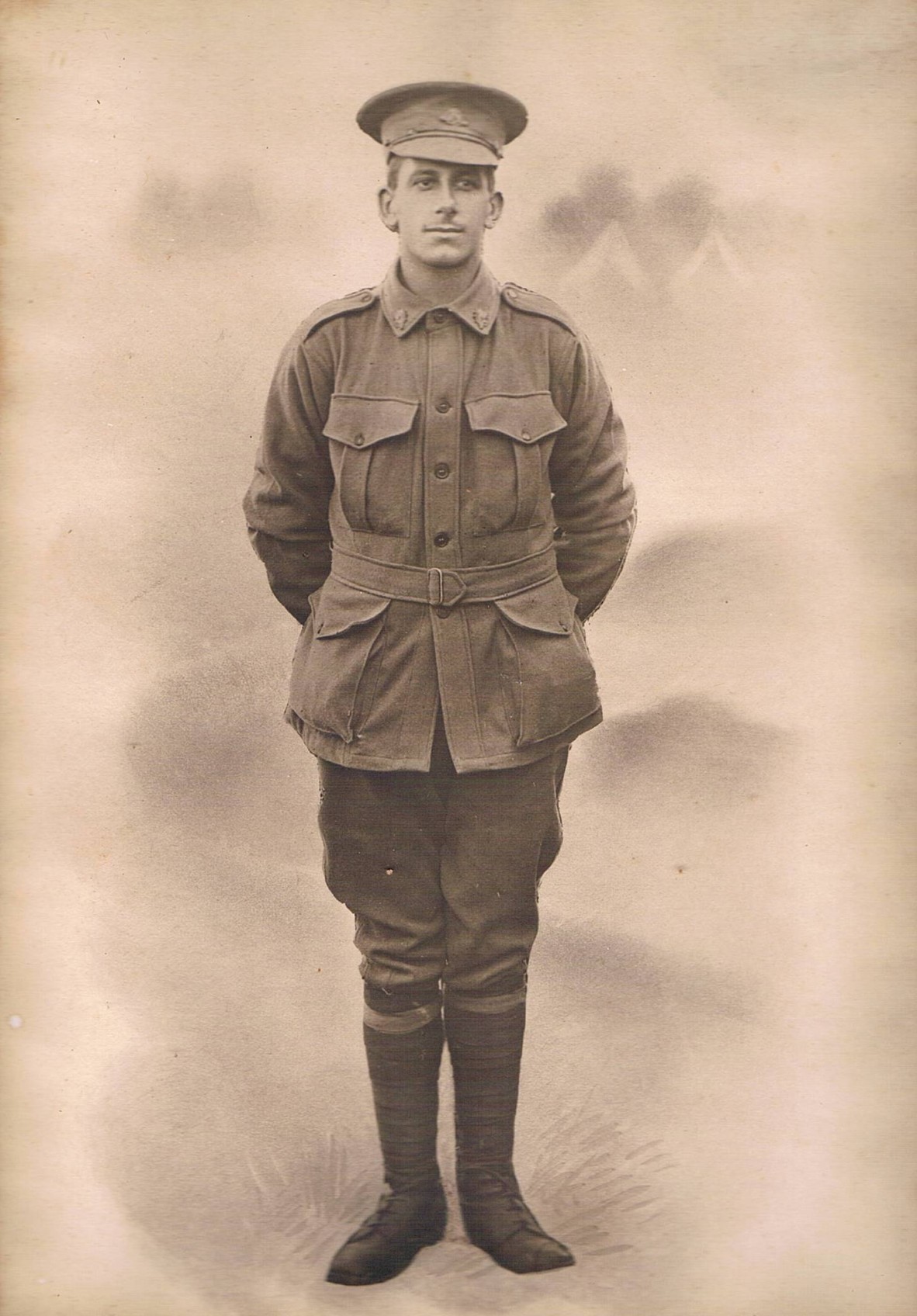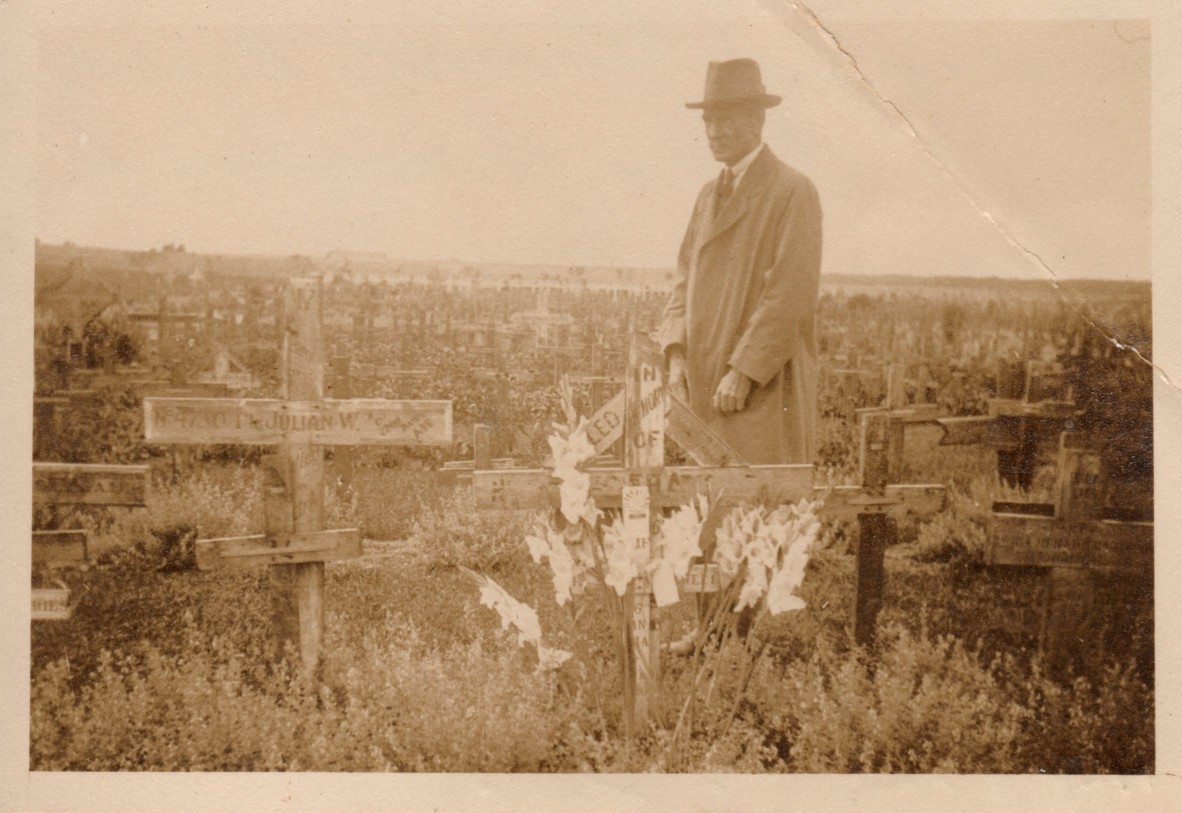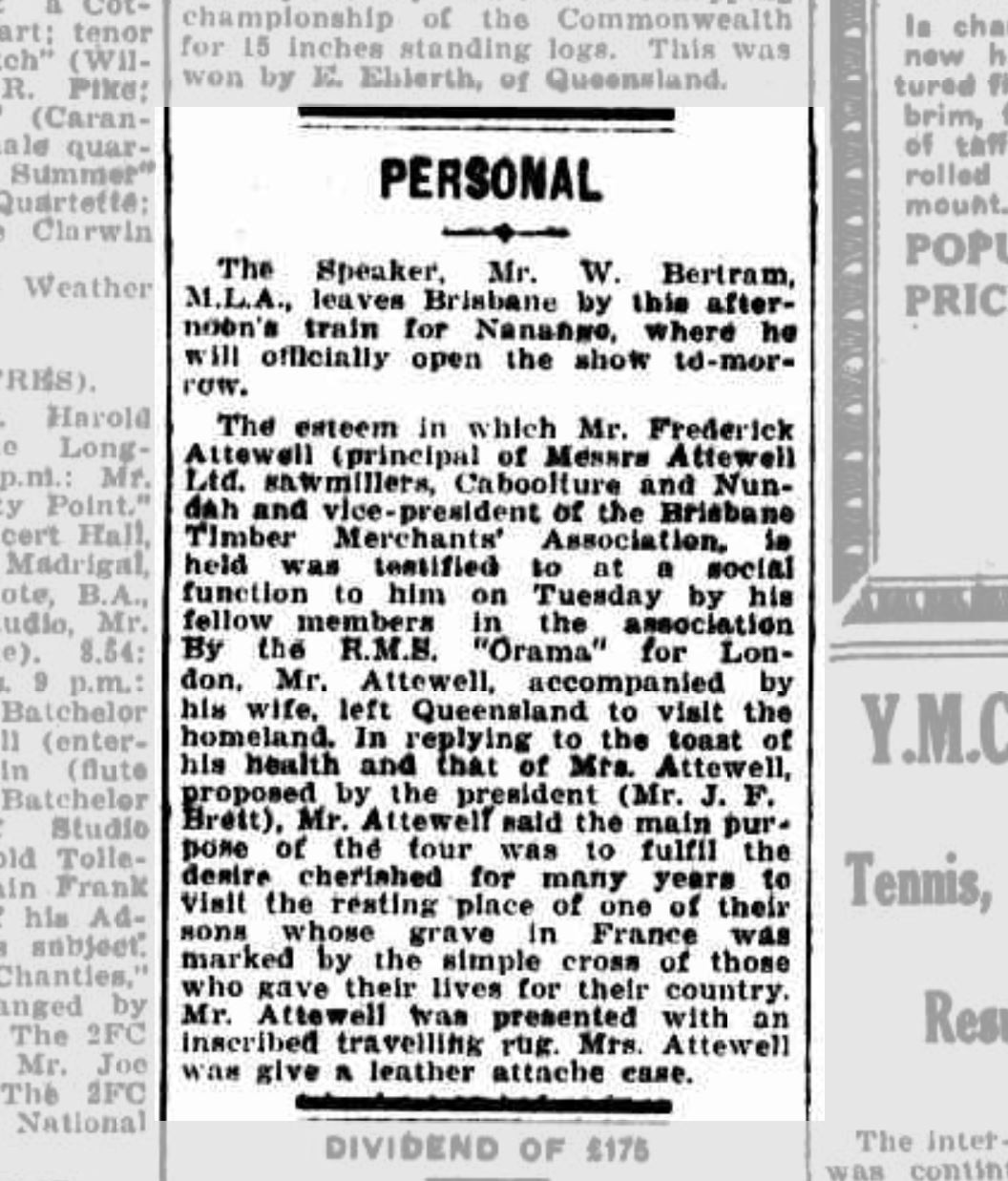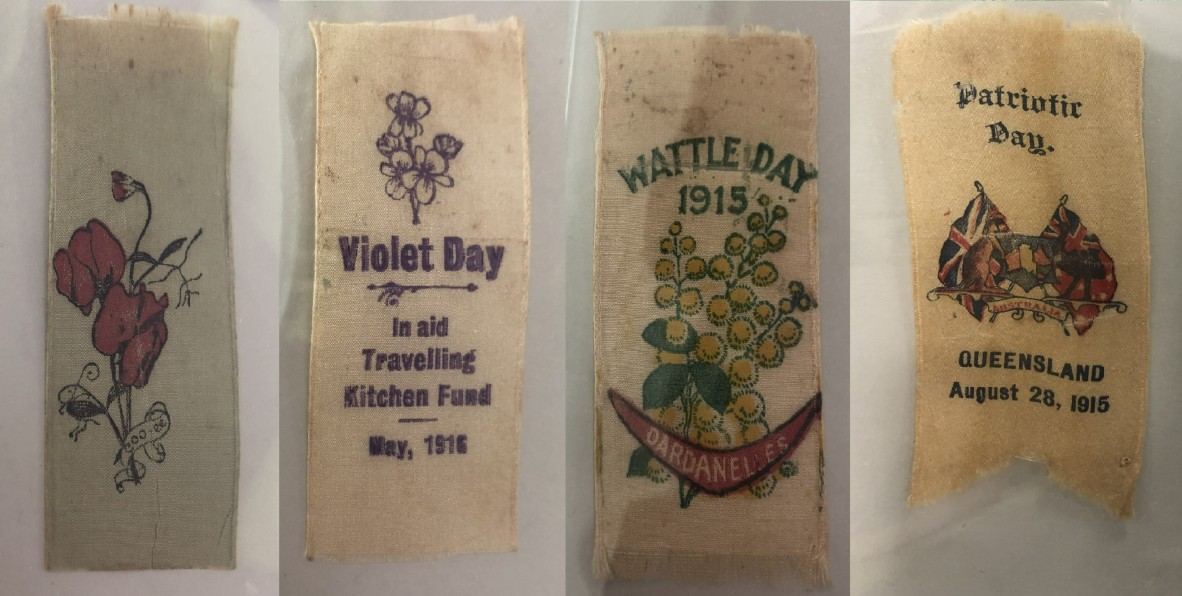Mementos of War and a Brother’s Sacrifice: The Jack Attewell Collection
By India Dixon, Librarian, Queensland Memory | 2 July 2021
A recent addition to State Library’s historic John Oxley Library collection is the Jack Attewell Ribbons Collection (Accession 32990). This collection, comprised of a single prayer book and nine silk ribbons, are a poignant window into the wartime experience of John Angus "Jack" Attewell. Born in 1903 to Frederick and Alice Attewell, Jack was only 11 years old when the First World War began. However, despite his youth, the war would have an impact upon himself and his family that would last a lifetime.
Jack's older brother, Private Frederick Herman Attewell, was 23 when he enlisted in Brisbane on 31 May 1915. His records indicate that he was a draughtsman in Nundah prior to his enlistment, close to where his parents and younger sibling lived. Frederick was attached to the 26th Battalion and embarked upon the HMAT Ascanius on 29 June 1915 bound for Alexandria. In September, he was transferred by ship to the Gallipoli Peninsula where saw action alongside other Anzac forces. The conditions endured by ANZAC forces on the Gallipoli Peninsula were harsh, and Attewell was transferred to 5th Field Ambulance on 17 November 1915 for observation due to symptoms of suspected dysentery. He returned to his duties only three days later.
Attewell was evacuated from the Gallipoli Peninsula on 9 January 1916, returning to Alexandria for 3 months before embarking for France on 15 March. His troop ship arrived on 21 March 1916 and he proceeded to serve as a signaler in the 26th Battalion Headquarters. He was killed in action on 14 November 1916.

Fred Attewell in dress uniform. Photo courtesy of Les Robinson.
Following the news of his death, several of Private Attewell's friends sent letters to the family detailing the manner in which he died and attesting to his cheerful and enthusiastic nature.
One such friend, Bernard James, wrote the following:
He was out repairing the telephone lines at the time on a heavily shelled piece of ground - a dangerous job - but Fred would never mind that. He was the best man in the section, and did the work of six men.
Sapper Harold Hinckfuss provided further detail:
Was informed by Sergeant De Vis that he and Fred were out mending a telephone line, and had only just mended the break, when a highly explosive shell burst very close to them, killing poor Fred instantaneously.
The news of Fred's death had a profound impact upon the Attewell family. Due to the vast distances and massive losses of World War One, an executive decision was made by the Australian Government not to return any deceased soldiers to Australia. The lack of access to their loved ones resting places, and the lack of a local dedicated place at which to mourn the vast losses fundamentally shaped the way in which people mourned.
The Attewell family was also impacted by this lack of access, and in April 1927 Frederick and Alice Attewell departed for the United Kingdom with the purpose of finally paying respects at their son's grave. This was a dream achieved by few contemporary Australians during their lifetimes, many of whom never had the means or opportunity to visit their loved ones' final resting places.

Fred Attewell’s father attending the grave of his son, France 1927. Photo courtesy of Les Robinson

PERSONAL (1927, April 21). News article about Fred Attewell’s father travelling to France to visit the grave of his son, 1927.
The Telegraph (Brisbane, Qld. : 1872 - 1947), p. 3. Retrieved July 1, 2021, from http://nla.gov.au/nla.news-article182448813
The ribbon collection which has brought Private Attewell's story to light is remarkable in its own right. The nine ribbons, stored between the pages of an unassuming school prayer book for over 100 years, each document a different commemorative ceremony or fundraising activity undertaken during World War One. It is likely that the young Jack Attewell collected these ribbons across the war years, purchasing the ribbons and displaying them pinned to the lapels of his coat during marches, fundraising events, and recruitment drives. It is interesting that Jack chose to store his ribbons in his Armidale State School prayerbook, as he predominantly collected the ribbons between 1914 and 1916 prior to his brother's death, two years before he began his attendance at the school. A relative of Jack Attewell suggested that they may have carried sentimental significance for Jack; perhaps they served as an ongoing reminder of his older brother's sacrifice that he could carry with him when he left the family home to attend school in Northern New South Wales.
The ribbon collection has been excellently preserved within the pages of the prayer book, maintaining colour and detail that are rarely encountered in other extant examples of the time. Jack's ribbons include two Wattle Day ribbons from 1915 and 1917, Patriotic Day Fund ribbons from 1914 and 1915, and a Dardanelles Campaign ribbon of unknown date. Two highlights from the collection include a "Violet Day" ribbon and a poppy ribbon of unknown origin. Violet Day was a precursor commemorative event originating from South Australia. Violet Day was eventually replaced by Remembrance Day, and the violet flower was replaced by the poppy as the emblematic commemorative flower for World War One. The second ribbon, a delicate green-grey in colour and adorned with an image of a red poppy-like flower, bears the word "coo-ee" on a small banner. "Coo-ee" was used as a summoning call or phrase on a number of recruitment posters during World War One. It is unknown whether this ribbon is connected to a recruitment-based event.

The ribbon collection which brought Private Attewell's story to light. The nine ribbons, stored between the pages of an unassuming school prayer book for over 100 years, each document a different commemorative ceremony or fundraising activity undertaken during World War One.
32990 Jack Attewell Ribbons Collection, John Oxley Library, State Library of Queensland.
More Information
Watch:
- 29355 Margaret Thorsborne AO Digital Story 2013
- 30561 Queenslander soldier portraits digital story 2016
- 30961 Queensland's First World War Death Registers 2017
Read:
- Queensland’s First Anzac Day Blog Story
- Frederick Attewell’s service records
- The Australian War Graves Pilgrimage of 1929
View:
Comments
Your email address will not be published.
We welcome relevant, respectful comments.